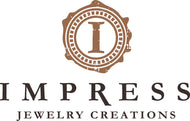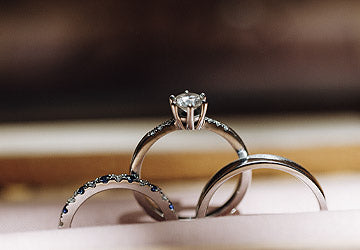You’d never believe how dirty your jewelry really is – if you really take a close look. Your jewelry harbors food, bio-gunk, and particulate build-up that serves as a breeding ground for germs and bacteria. And, as you think about keeping yourself and your family safe from spreading the COVID-19 virus, it is crucial to have clean jewelry.
When you remove your ring, do you ever use your spit for lubrication? Do you eat with your hands, like most people? Think of how close, in proximity, your hand jewelry is to the food you eat – not to mention the toilet roll.
The only way to protect your jewelry from getting filthy is not to wear it. And, since that defeats the purpose of having beautiful jewelry to wear, it’s time to find out how to clean jewelry. And, learn the facts of which home-cleaning methods really work to clean jewelry.
SHOULD YOU CLEAN YOUR JEWELRY AT HOME?
Wear your jewelry often enough, and it is bound to accumulate gunk, junk, and crud. Just like your clothing, you have to clean jewelry of the dirt, germs, and build-up that accumulates throughout the day. But, be careful that you know what cleaning technique goes with which type of jewelry.
Gold, silver, gemstones, and pearls all require different techniques and cleaning supplies. And, with some standard household cleaning supplies, and the right techniques your jewelry will sparkle like new. But, just because it sparkles like new, does not mean that it is bacteria-free or sanitary.
All of the home-cleaning methods that are discussed, below, are insufficient to disinfect and sanitize jewelry of infectious diseases, like human coronaviruses (HCVs). At least, not with the safety of your jewelry in mind.
HOW TO CLEAN DIFFERENT TYPES OF JEWELRY AT HOME
The next time you go to remove your ring – stop! Don’t use your spit as lubrication – just think of all the things you recently touched. Use Windex instead, to easily remove your rings, while giving a mini-cleaning at the same time.
Jewelry is an innocent bystander to many of your dirtier habits and tendencies. Jewelers have fun sharing pictures with each other of the nasty gunk on the jewelry that customers drop off. And, in 2020, personal hygiene is more important than ever.
The home-cleaning methods, below, cannot replace the occasional professional cleaning. Home-cleaning measures are great for day-to-day maintenance of your jewelry. There is no guarantee, however, that any home-cleaning method is adequate to disinfect things like COVID-19 or any other types of coronavirus.
What’s wrong with cleaning your jewelry in good-old soap and water? Well, the answer, is it depends. Maybe there is nothing wrong with using a simple soap and water solution – or it might make your jewelry look worse.
Cleaning gold is different from cleaning silver, just like cleaning gems is different from pearls. Instead of paying, hand-over-fist, for someone else to clean your jewelry, follow these 4 tips to make it shine like new.
HOW TO CLEAN GOLD JEWELRY AT HOME
Gold is easy to clean – and easy to scratch. It is an inherently soft metal, which means your cleaning process must not require much scrubbing. Instead, you clean jewelry of gold with a soft bristle toothbrush, dish detergent, and liquid ammonia.
First, fill a bowl with warm water, a few squirts of dish detergent, and three to four drops of liquid ammonia. Then, using a clean soft-bristle toothbrush, gently wipe away any dirt or tarnish from the gold. When you finish brushing off the accumulated dirt from the gold, place the piece in a warm water rinse.
Lastly, blot the gold with a dry microfiber towel to keep watermarks from accumulating. Now, your gold jewelry is clean, like-new. But, how do you keep it that way?
Keep your gold jewelry away from chlorine. Refrain from showering or going into a hot-tub with gold jewelry, as it tarnishes. Chlorine in pools and hot tubs, especially, will discolor your gold jewelry over time.
Introducing heat and chlorine to gold changes the molecular construction of the metal. The result is the metal becoming brittle, as the molecular formation starts to resemble Swiss cheese. When the flexibility of your gold becomes brittle, often it cracks.
If you want jewelry that you can wear in the pool, shower, and hot tub, look for platinum jewelry. Platinum is cheap, in comparison to the price from 10 years ago. And, it is resistant to chemical corrosion from chlorine build-up.
HOW TO CLEAN SILVER JEWELRY AT HOME
The biggest misconception is that silver and gold require the same cleaning technique. Silver has special properties that mandate a different process to clean jewelry. To clean silver jewelry, you need boiling water, table salt, baking soda, white vinegar, and tinfoil.
Start, by forming a sheet of tinfoil to the inside of the bowl – shiny-side facing up. Then, mix in a cup of hot water, a tablespoon of baking soda, a tablespoon of salt, and a half-cup of white vinegar. Once the ingredients are mixed to form the silver cleaning solution, simply submerge your silver pieces.
Over the next five to ten minutes, you see a chemical reaction taking place, in which the dirt and gunk is disintegrating off of your jewelry. You don’t even have to scrub. After ten minutes, remove the jewelry and wipe dry with a microfiber cloth.
Often, silver jewelry contains other materials, such as opals or gemstones. If this is the case, do not submerge your jewelry, as it can damage the soft stones. Instead, use your solution on the silver, and gently brush the stone with a soft-bristle toothbrush.
The other thing to look out for when cleaning silver is any piece that has been artistically oxidized, called antiquing the silver. Silversmiths use oxidation to create beautiful patterns in the silver, which show up almost black. This method of silver cleaning will remove the 'antiquing' effect.
HOW TO CLEAN JEWELRY WITH GEMSTONES AT HOME
Gemstones are low-maintenance to clean, as long as you use the right tools. Use a soft-bristle toothbrush to gently scrub hard gems. Hard bristles can knock the gem out of its setting, and even scratch the silver or gold in which it is set.
To clean jewelry with gemstones, use warm water and standard dish detergent. Lightly brush the gemstone with the soapy water. Do not soak the gemstone, and wipe clean with a damp cloth to finish.
A popular technique is to clean jewelry with gemstones using ordinary glass cleaner. Glass cleaner, however, can take off the finish of the metal in which your gemstone is set.
If you have particularly difficult dirt to clean, use a quarter-cup of warm water, a few squirts of dish detergent, and a tablespoon of baking soda. Mix it into a paste and use a soft-bristle toothbrush to remove grease and grime from your gemstone. This technique is also great to clean jewelry with diamonds.
HOW TO CLEAN PEARLS AT HOME
Pearls are delicate, natural beauties that can last many generations – if you take care of them. Pearls have a natural finish, called the nacre. The nacre gives pearls their natural gleam, so you don’t want to ruin it with the wrong cleaning solution.
To clean jewelry with pearls, do not scrub at all. Mix a quart of warm water with a teaspoon of hypoallergenic laundry detergent. The detergent must be mild, or you risk damaging the nacre of the pearl. Also, take care that the water is only warm – not hot.
Hot water, physical scrubbing, and abrasive soaps will deteriorate the nacre of your pearls. Unlike silver, pearls react poorly to high pH solutions, like ammonia and vinegar. Submerge your pearls in a simple mixture of warm water and mild soap.
After 10 to 15-minutes, remove the pearls and rinse in a bowl of clean water. Set the pearls on a dry microfiber cloth. Once they are dry, store them in a safe place where they won’t get scratched.
Be careful not to leave a string of pearls in liquid for more than a brief soak. The danger is in allowing the silk string, on which the pearls are strung, to rot and decay. As the saying goes, “Pearls are the last thing you put on, and the first thing you take off.”
And remember – these are only general guidelines to clean jewelry. Every piece is unique, and if you have any questions, consult a trained jeweler or goldsmith.
HOW PROFESSIONALS CLEAN JEWELRY
You can clean jewelry at home to improve the appearance of your jewelry, but it is not a substitute for professional cleaning. Professional jewelry cleaning is a conclusive process that ensures all viral, bacterial, and other contaminants are sterilized.
A professional jeweler uses specialized tools and machines to clean jewelry, while maintaining the integrity of the gems, metals, and other materials in the jewelry. To ensure that any and all contaminants are eradicated, the professional jewelry cleaning process involves three steps:
STEP 1: ULTRASONIC PATHOGEN CLEANING
The first stage of the process breaks down pathogenic contaminants. An ultrasonic machine uses a dynamic motor to produce finely-tuned vibrations. The vibrations emanate through the ultrasonic solution, in which the jewelry is submerged.
The ultrasonic frequency works to remove corrosion and deposits of lime that build-up on pieces of jewelry. As the ultrasonic cleaning progresses, jewelry is cleaned of oxide layers, water damage, oil, and grease. Unlike home-cleaning methods, ultrasonic cleaning breaks up the nasty stuff hiding beneath the surface and destroys pathogens.
STEP 2: CONCENTRATED ALCOHOL DISINFECTION
The second step is a concentrated alcohol rinse and bath to disinfect the jewelries hard-to-reach areas. Alcohol acts to penetrate the fine crevices – underneath gems, stones, and set-pearls – to disinfect hard-to-reach areas that are usually neglected in home-cleaning. These are the places where germs and bacteria love to hide and propagate.
STEP 3: HIGH-PRESSURE DISTILLED STEAM TREATMENT
High-pressured, distilled steam cleaning is the final step to the professional jewelry cleaning process. The technician, or jeweler, blasts away gunk and build-up on jewelry with a precision-jet of steam. Steam is ideal for clearing away the caked-on biomass on fragile and old jewelry, that you don’t even notice anymore.
GET YOUR JEWELRY CLEANED BY A PROFESSIONAL
It is not difficult to clean jewelry – but the method is specific to the type. Avoid accidentally damaging your jewelry by making sure you are using the correct technique for the materials. And, if you are not sure what materials your jewelry consists of, bring it to your local custom jeweler to find out.
Share this article with someone in your social media community who needs to learn how to clean jewelry. If you want to learn more about how to maintain and clean jewelry of your own, contact Impress Jewelers to talk to an expert. And, check out more jewelry cleaning guides and resources on the blog.





